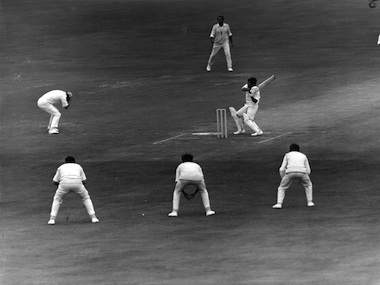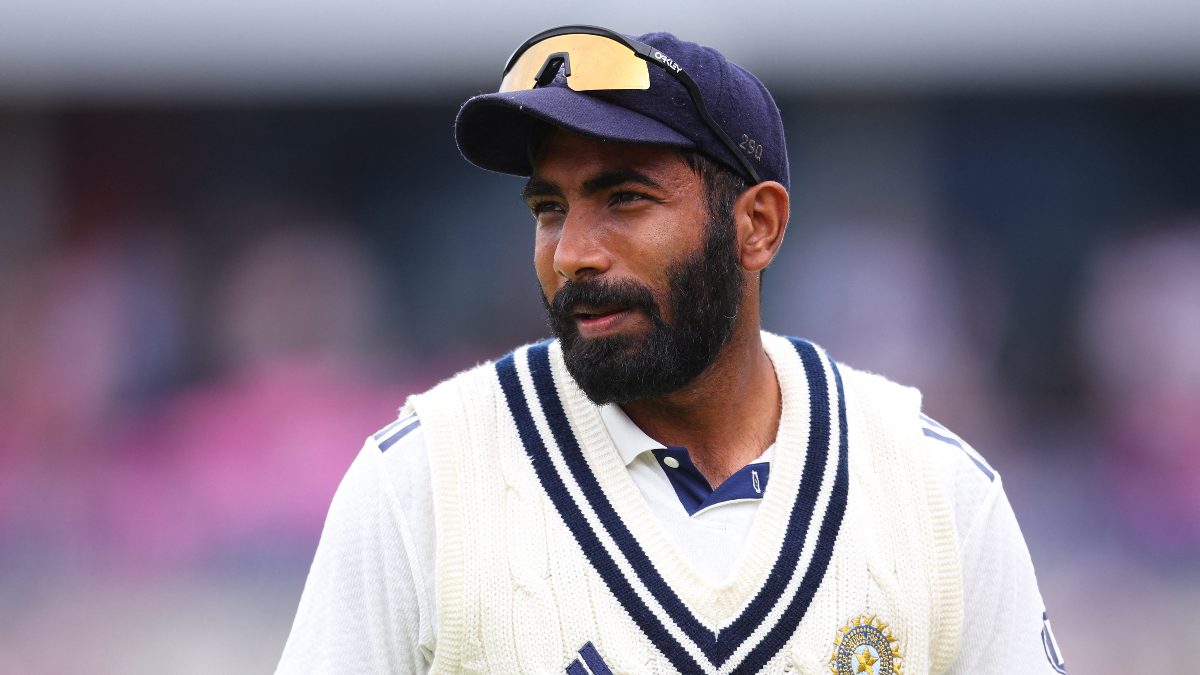It’s a little over 40 years since I first saw, in a newspaper, a colour other than black ink. I was 10 years old, in ‘Calcutta’, living in a most unusual household which bought all the three English newspapers published in the city, The Statesman, The Hindustan Standard and Amrita Bazar Patrika. [caption id=“attachment_39194” align=“alignleft” width=“380” caption=“August 1971: Indian cricketer Sunil Gavaskar batting during a cricket match. (Photo by Central Press/Getty Images)”]  [/caption] All of us knew what we would see in the papers that morning: front page headlines announcing that India had recorded its first ever win overseas in a Test match – against the West Indies in Port of Spain, Trinidad. It was an extraordinary moment in our history – at that time, it was India’s most glorious sporting achievement since Independence. Of course, we had won gold and other medals in hockey, but we excelled at hockey even under British rule; cricket was a sport that was relatively new to us; it was a sport dominated by England, by South Africa, by Australia – and, recently, by the West Indies. To beat one of these teams away was close to unthinkable. More unthinkable when you consider that the West Indies side boasted such fearsome names as Gary Sobers, Rohan Kanhai, Clive Lloyd, Roy Fredericks and Vanburn Holder. Even more unthinkable when the Indian team had a rookie in Sunil Gavaskar as an opener. What we would discover was that Gavaskar was a genius, (he scored 65 and 67 not out in the match) and that our spin trio of Bedi, Prasanna and Venkataraghavan made a formidable team (they took 15 wickets between them in the match). Solkar was the secret weapon, fielding unhelmeted at forward short leg (which was really forward) and pouching six West Indian batsmen in the two innings at Port of Spain. Dilip Sardesai, the original Indian wall, scored a century in the first innings. This was the stuff of legends. History was made, and the newspapers of the day acknowledged the achievement with eight-column banner headlines – in red! West Indies had been to India just a few years ago, in 1966-67. You had Sobers, Kanhai, Lloyd – and you had Wesley Hall, Charlie Griffiths and Lance Gibbs as well. West Indies started with a bang, pummelling India by an innings and 45 runs. The next test, in Calcutta, was a moment of shame – when riots, caused by the authorities selling more tickets than Eden Gardens could accommodate, led to a police lathi charge and the abandonment of the match. The West Indian cricketers made the best of the unexpected holiday – Sobers and Kanhai went off to the Royal Calcutta Golf Course for a few rounds. The third test was a draw, so the West Indies won the series 1-0. In other news, cricket made Page 3, even if there was no Page 3 then. The Indian captain, Nawab of Patuadi junior, was linked to the actor he would later marry, Sharmila Tagore. Tagore was the cynosure of all eyes, thanks to her pairing with the newly minted superstar Rajesh Khanna, in Aradhana. Gary Sobers helped the cricketers stay on Page 3 as well – by getting engaged to actress Anju Mahendru. Farokh Engineer (India’s wicketkeeper) added his contribution by becoming (I think) the first cricketer to appear in a TV commercial by signing on with Brylcreem. The seeds for a cricket+Bollywood+brands+Page 3 crop were sown; it would take many decades and a Lalit Modi to reap the harvest. This extraordinary package of larger than life cricketers and their off-the-field personalities laid the foundation for intense interest in the 1970-71 series in the West Indies and the Indian team rewarded the fans by the win. And as I write this, India is on the verge of another series win in the West Indies. I haven’t been watching the matches live; I check the score on the net the next morning. Contrast this with 1971, when I was 10 years old, and stayed awake for as long as I could, listening to the commentary on BBC. To keep me awake and gripped, one needs heroes and legends – on both sides of the divide. Okay, if that’s tough, at least on one side. This series gave me neither – and I will not be looking for banner headlines in red. Anyway, red is not uncommon in newspapers any longer… … and cricket wins abroad are not uncommon, either.
As I write this, India is on the verge of another series win in the West Indies. I haven’t been watching the matches live; I check the score on the net the next morning. Contrast this with 1971, when I stayed awake listening to the commentary on BBC.
Anant Rangaswami was, until recently, the editor of Campaign India magazine, of which Anant was also the founding editor. Campaign India is now arguably India's most respected publication in the advertising and media space. Anant has over 20 years experience in media and advertising. He began in Madras, for STAR TV, moving on as Regional Manager, South for Sony’s SET and finally as Chief Manager at BCCL’s Times Television and Times FM. He then moved to advertising, rising to the post of Associate Vice President at TBWA India. Anant then made the leap into journalism, taking over as editor of what is now Campaign India's competitive publication, Impact. Anant teaches regularly and is a prolific blogger and author of Watching from the sidelines. see more


)

)
)
)
)
)
)
)
)



